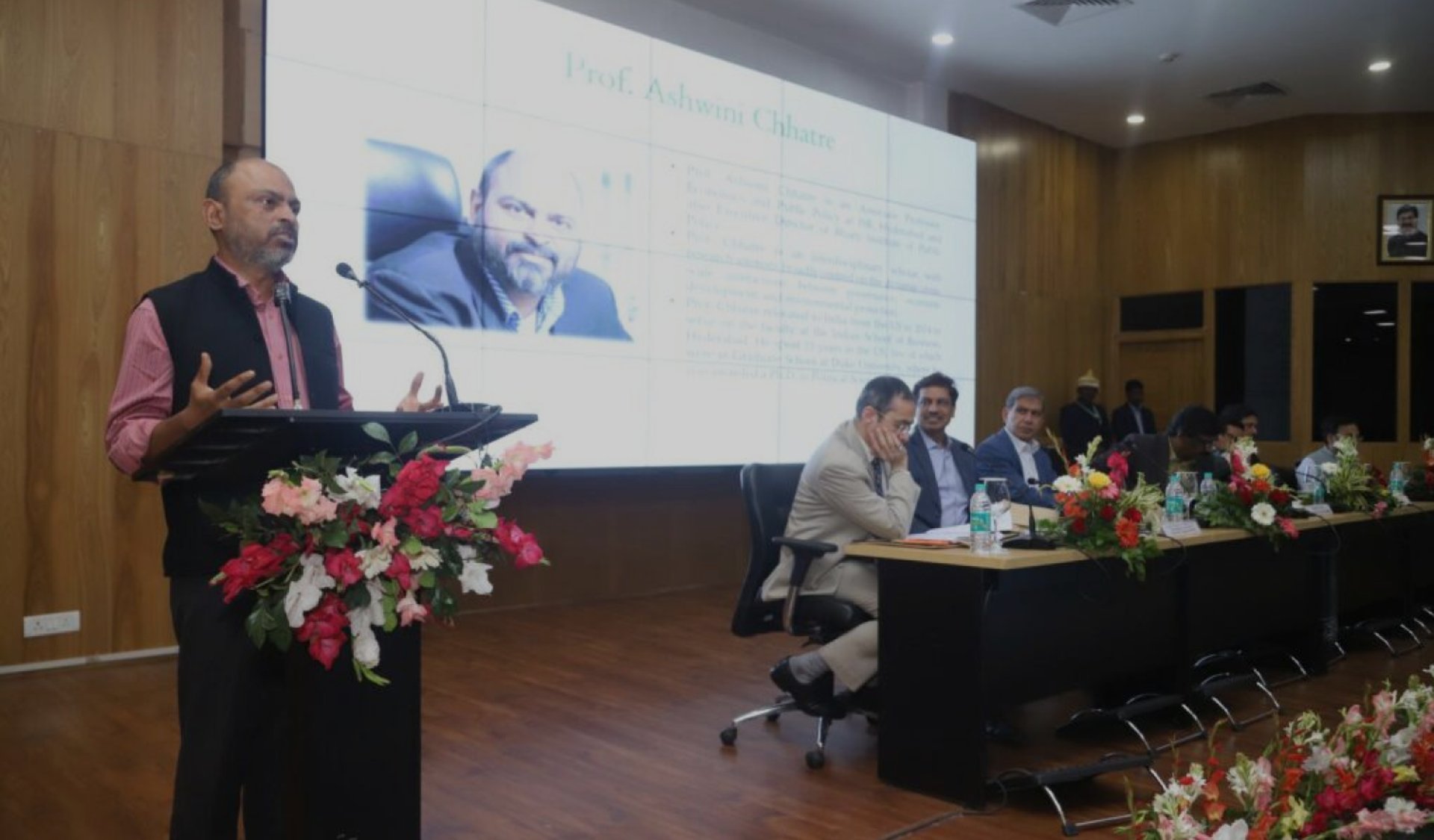
05.02.23
Jharkhand Bioeconomy Mission: Harnessing Forests for Sustainable Bioenergy
Prof. Chhatre began by discussing ‘crowding in’ private investments: each rupee of public finance attracts additional private capital. He argued that state interventions succeed when they guarantee profitability to private investors, thereby encouraging private capital to support regional development.
He then emphasised the significance of discounted forest-land resources and their critical role in driving the state’s economic growth and development. ‘I want to point to the large area of forest land that lacks tree cover—an estimated 1.5 million hectares (15 lakh hectares)—which currently produces nothing and is caught in a quagmire of regulatory tripwires,’ he shared. This fundamental idea set the stage for the Jharkhand Bioeconomy Mission.
These lands, with high restoration potential, offer a significant opportunity for forest regeneration using native species, such as bamboo. Bamboo not only grows rapidly in its natural habitat but also thrives under regular harvesting, sequestering large amounts of carbon both above and below ground. It will serve as a valuable raw material for industry and help meet the nation’s pressing need for ethanol and other fossil-fuel alternatives.
Having outlined bamboo’s promise, Prof. Chhatre drew attention to Jharkhand’s 1.2 million hectares of standing sal forests as a major economic opportunity. He estimated that processing just 10 per cent of fallen seeds into biodiesel at ₹ 70 per litre could generate approximately ₹ 6 lakh crore (US $ 8 billion).
He provided further context by explaining that:
‘A bioeconomy mission for Jharkhand fortunately does not require additional resources. It does not require the budget to create new line items. What it requires is a coordinated mechanism—because the sal seeds already exist, and the land already exists. There is a pool of central funding, such as CAMPA, NREGA, and other centrally sponsored schemes, that can be harnessed and targeted at specific landscapes where these resources already exist in extremely large numbers. This can be done using technology that is well-established and commercially available for large-scale application; and by building on the current entrepreneurship that already exists.’
Finally, Prof. Chhatre proposed a ‘triple win’ solution—underpinned by secure tenure and coordinated funding—to tackle unemployment, forest degradation, and rising carbon emissions. By converting standing forest wealth into clean energy through inter-agency collaboration, the mission will position Jharkhand as a leader in India’s future energy sector and a beacon of national emission-reduction efforts.


